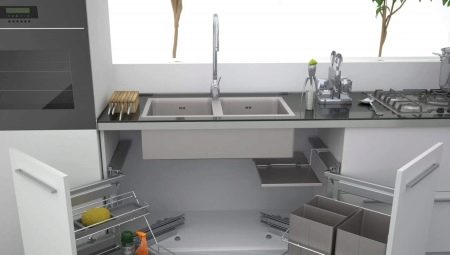When choosing furniture, one of the first questions facing the buyer is determining the right size. One of the important parameters of a kitchen cabinet is its depth. This also applies to floor cabinets - in fact, they will store many types of products that do not require refrigeration equipment, as well as various kitchen utensils - pots, pans, coffee makers, small appliances and much more. I would like everything to fit.
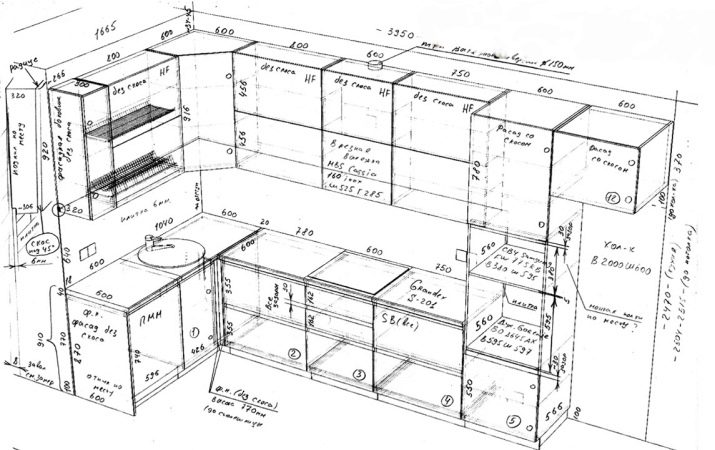
Standard lockers
The floor-standing kitchen cabinet consists of a facade (doors), a bottom, sides, a back wall and internal shelves. A tabletop is placed on top. The cabinet is placed on the legs, which can be closed with a base. Inside, one shelf is standardly mounted (except for sections for washing), but their number can be increased if desired. In addition, they can put retractable mechanisms, storage systems or built-in appliances.
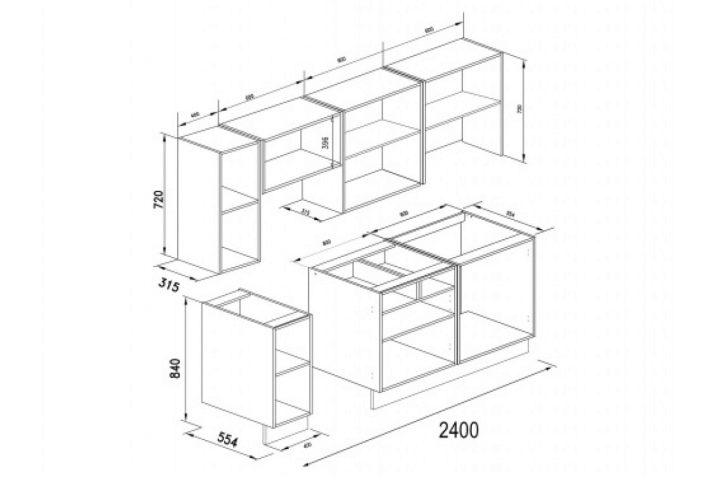
The standard depth of such furniture is 56 cm. Thus, a table top 60 cm wide protrudes slightly from both the back and the front. This figure is not accidental and is due to a number of reasons.
Suitable for most models of household appliances - built-in ovens, dishwashers, refrigerators. Moreover, almost all conventional equipment has the same parameters.
Enough to make even a narrow cabinet quite roomy, since rather large items are stored in the lower part of the kitchen set.
It is under these dimensions that furniture fittings, guides and so on are usually made. Similar standards have been adopted not only by Russian, but also European manufacturers.
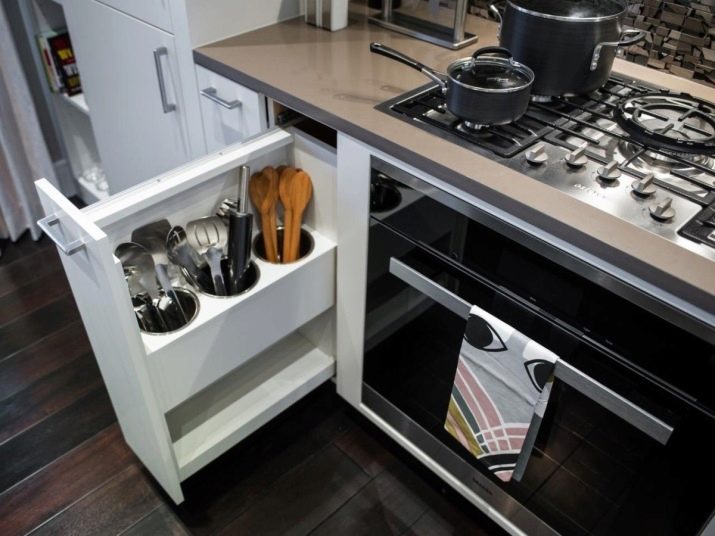
An exception is the angled beveled module. It is of course deeper and more capacious, which is due to its design features. But its sides, to which ordinary cabinets are mounted, have the same standard size. The same applies to modules with curved, wavy facades - their depth cannot be changed, but an adjacent cabinet with a built-in dishwasher or oven will be standard.
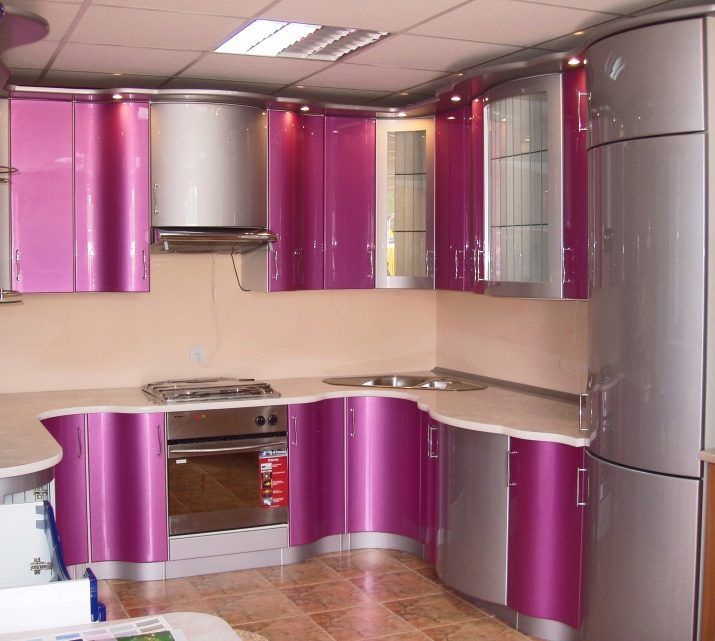
Custom depth
Sometimes you have to deviate from generally accepted figures. Most often it depends on the following factors:
- the size of the kitchen and the placement of furniture in it;
- physical characteristics of a person (in particular - growth);
- internal content;
- destination;
- individual preferences of the customer.
If, for one reason or another, ordinary furniture does not fit, you will have to look for an enterprise manufacturing custom-made kitchen sets according to a specially developed project.

Usually a deviation from the standard dimensional grid entails an increase in the cost of the finished product, because for this you will have to reconfigure the equipment.
Small companies go to the production of custom products more willingly and at a lower price, but quality may not meet expectations.
Increasing depth is impractical. This will make the order more expensive, as more material is needed, but using such a cabinet will be difficult. The deep space will remain inaccessible, because you have to try to get the right item out of there. More often, the depth is reduced to 50 cm or even 40 cm. At the same time, the width of the countertop remains equal to 60 cm, the gap between the rear wall of the cabinet and the wall simply increases. Most often this is done in order to hide pipes or ledges. Otherwise, they will have to cut the frame under them.

How to choose the right size?
To find "your" size, you need to evaluate the capabilities of the room. If the kitchen is narrow, reducing the bottom of the headset even by 10 cm will be quite noticeable and save space. Indeed, in addition to cabinets, it is necessary to allocate space for a table and chairs in it. The same applies to redevelopment cases, when the kitchen is moved out into the corridor, hallway or balcony. If the kitchen is quite long or is located at an angle (along two adjacent walls), half of the cabinets can be made less deep. To the transition between such parts of the headset was not abrupt, use adapter modules.
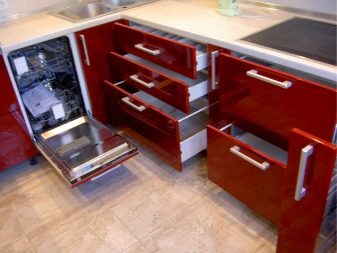
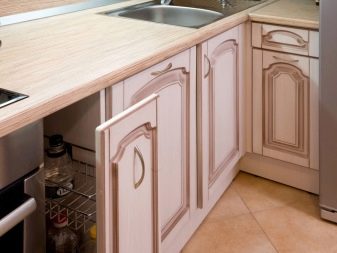
In addition, you should pay attention to the overall appearance of the kitchen. Compared with shallow cabinets, the rest of the furniture and appliances (refrigerator, stove) will come forward.
Finding more compact models is difficult. With built-in appliances and a single countertop, such protrusions look more organically.
It is also necessary to plan internal filling in advance. Each set of kitchen furniture should have at least one drawer, for example, for spoons and forks. The drawer simply does not fit in a cabinet with a depth of less than 45 cm. Hinged doors can be installed on cabinets of any depth, but it is still more convenient to use drawers. For large kitchen utensils like a large cauldron or box with a food processor, the appropriate compartments are needed. If this is not foreseen on time, then all kitchen utensils simply will not fit.

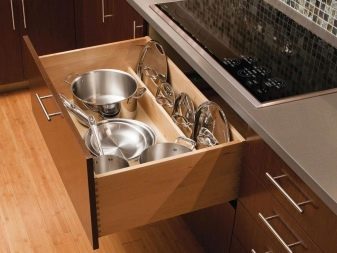
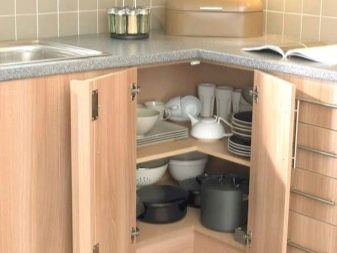
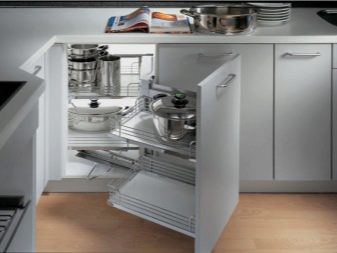
It should be noted that the use of shallow lower cabinets does not always entail a decrease in the width of the countertop.
Indeed, in this case, you will have to pick up a small sink and a hob with two burners. Yes, and the work surface will have to sacrifice. Using a narrow countertop is inconvenient - it is difficult to cut products or place everything you need on it.
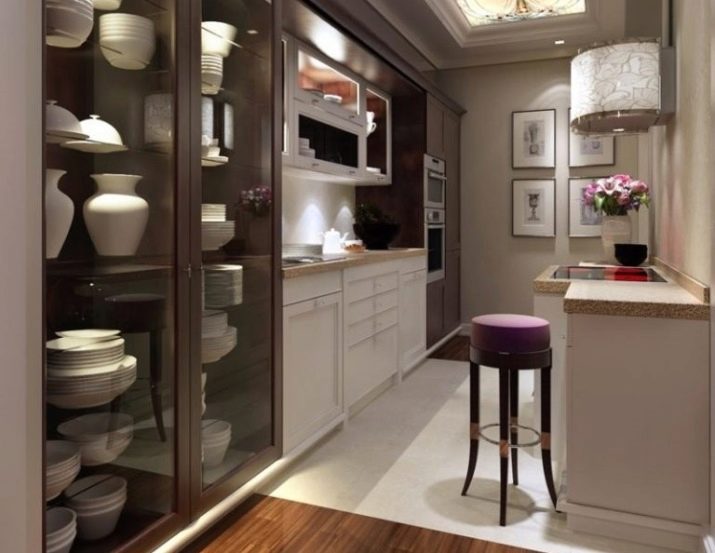
If you do not want to solve the above problems, spend time developing a special project and searching for the necessary accessories, it is better to pay attention to standard sizes. Indeed, during the repair, in addition to these parameters, many other issues will have to be addressed.
About ergonomics in the kitchen, see below.
